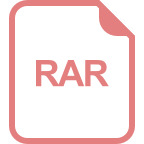Today, the desktop PC is finding more
and more uses within the average home.
Whether the PC is used for homework,
digital photos, music storage, video edit-
ing or game playing, the need for new
capabilities in the home are growing.
With these new capabilities comes the
additional push for better performance to
ensure a good user experience.
One of the major components of
today’s PC is the storage subsystem.
Hard-drive and CD/DVD capacities are
increasing as each new PC line is
released. These devices are vital in ensur-
ing that the end user has more than
enough media space for any type of data
storage application they may require.
MP3 music files, digital photos, and home
movies are now moving to the PC for
easy access within the home along with
longer lasting accessibility in the future.
Today’s consumers want to ensure
that the PC they purchase can store an
undetermined amount of music and
entertainment data, which drives the
need for large capacity storage in the
home system. The capacity limits in the
desktop hard drive have risen year after
year, almost to the point of having too
much storage space. But capacity is
only one factor of the equation for the
storage usability within the home—
another is performance.
Early on, hard-drive performance
was not a major factor in an end user’s
decision for purchasing a home com-
puter. In recent years, new storage
capabilities have been introduced into
the desktop PC market and have caught
the eye of most high-end home users.
With the integration of redundant
array of independent disks (RAID) and
serial advanced technology attachment
(SATA) capabilities into desktop
chipsets, home users gain additional
system performance that directly
impacts their usage of home media and
data reliability. A key new feature
defined in the SATA standard is native
command queuing (NCQ). This feature
is specific to the SATA interface but is
similar in some ways to other reordering
protocols developed for the small com-
puter system interface (SCSI). The sub-
ject of NCQ and the impact of command
reordering along with the comparison to
other interfaces will be reviewed here.
SATA NCQ
SATA is the latest generation of the
ATA internal storage interface. Due to
the inherent limitations of parallel ATA
technology, SATA is expected to be the
successor to parallel ATA and expand
the use of ATA-based technology in the
entry server and network storage mar-
ket segments. (For more information on
SATA, go to <http://www.sata-io.org>.)
Figures 1 and 2 outline an example
of the rotational optimizations seen
with reordering versus single-command
delivery to a device. In Fig. 1, it is
shown that an application has four read
accesses (A, B, C, and D) with a set of
approximate disk locations. In the case
of a legacy data transfer operation,
where only a single command is out-
standing to the device at one time, you
can see that these commands would
execute in the order given to the
device. Assuming the initial starting
head position shown in the figure, the
overall time to service these four com-
mands in that order is approximately
two and one half rotations of the disk.
An example of how these same
commands would be executed in a
reordering protocol is shown in Fig. 2.
With the same disk locations for the
four commands and a similar starting
head position, if the device received all
four commands in a short amount of
time, it would be able to determine a
more efficient way of executing the
four commands. In this example, the
commands are completed in the order
of
B → D → A → C
, with an overall
completion time of approximately one
rotation of the disk.
NCQ is a performance feature intro-
duced in the Serial ATA II: Extensions to
Serial ATA 1.0a specification. The fea-
ture provides hard drives with the abili-
ty to reorder commands that it receives
from the host with a maximum of 32
outstanding commands at a time. Usage
of this feature requires both the host
controller and device support the NCQ
command set and capabilities. There
©EYEWIRE
B
RIAN
D
EES
Native command queuing—
advanced performance
in desktop storage
4 IEEE POTENTIALS
0278-6648/05/$20.00 © 2005 IEEE


















